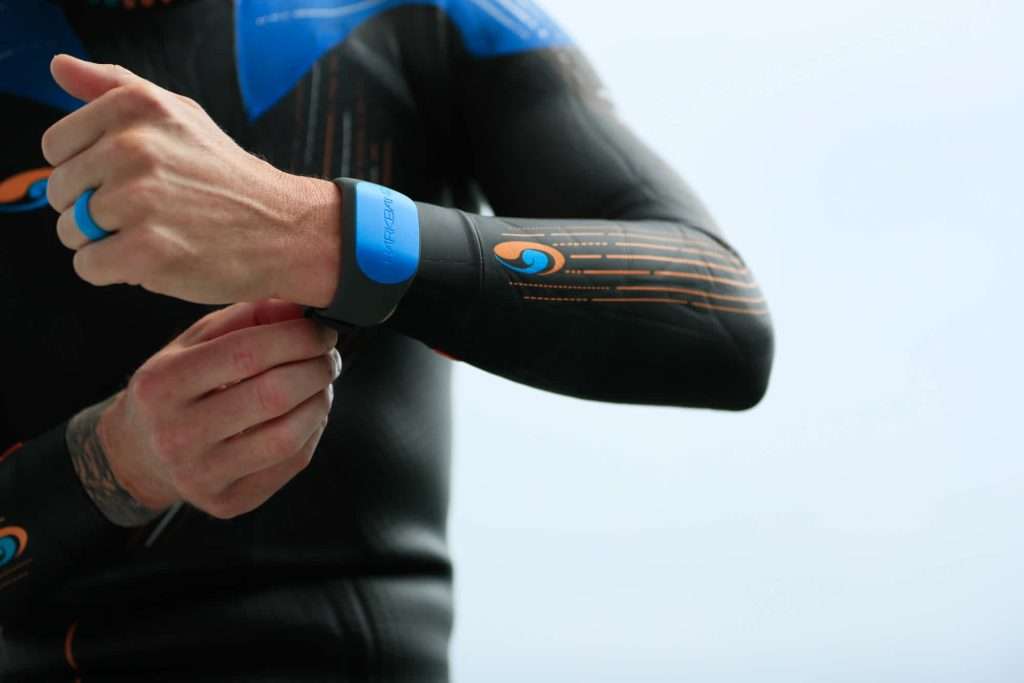Shark encounters, while rare, can be a legitimate concern for those venturing into certain oceanic territories. As an answer to this threat, various companies have developed shark deterrent devices, designed to repel these apex predators and reduce the likelihood of attacks. This article will delve into the structure, working principles, and effectiveness of these technologies.
I. Types of Shark Deterrent Devices
Shark deterrent devices come in various forms, each designed for different activities and situations. Here are some common types:
Shark Shields
Shark Shield is a brand name for a range of electric shark deterrents manufactured by Ocean Guardian. Shark shields, such as the Freedom7 or Surf7, are wearable devices designed to create a protective electrical field around the user, deterring curious or aggressive sharks from getting too close. The range includes products for surfers, divers, and swimmers.
Shark Shield devices use electric fields to deter sharks. Sharks possess an extraordinarily sensitive organ called the Ampullae of Lorenzini that they use to detect the bioelectric signals emitted by potential prey.
Shark Shields generate an electrical field that causes a powerful, uncomfortable sensation in the shark’s Ampullae of Lorenzini, thereby deterring the shark. However, the emitted field does not harm the shark or other marine life.

Shark Bands
Shark bands, like Sharkbanz, are wearable shark deterrent bands designed to repel sharks and reduce the risk of an encounter. They are meant to be worn on the wrist or ankle and are designed to be comfortable and easy to use, making them popular among surfers, swimmers, and divers.
Sharkbanz utilize magnetic technology to deter sharks. Sharks have a highly sensitive electroreceptive organ called the Ampullae of Lorenzini, which they use for navigation and hunting, detecting the bioelectric fields of potential prey.
The magnetic field generated by Sharkbanz overloads this sensory organ, causing a highly unpleasant sensation that deters the shark without causing it harm. Importantly, the magnetic field does not attract sharks; instead, it only affects them when they are close, within a meter or so.

The effectiveness of Sharkbanz has been tested with various species of sharks under different conditions. Studies have shown a significant reduction in the number of interactions when a Sharkbanz device is present.
Remember that no shark deterrent, including Sharkbanz, can guarantee 100% protection against all types of shark encounters.
Personal Shark Deterrents
Personal shark deterrents are wearable or handheld devices designed to repel sharks. They’re intended to provide an individual with a protective shield, thus reducing the likelihood of an interaction with a shark. Examples include products like the Shark Shield, Sharkbanz, and Ocean Guardian’s eSPEAR.
Most personal shark deterrents work based on an understanding of shark biology. Sharks have a highly sensitive electroreceptive organ called the Ampullae of Lorenzini which they use to detect the bioelectrical signals emitted by potential prey.
Personal shark deterrents generate an electrical field or magnetic field that disrupts this sensory system, causing discomfort to the shark and encouraging it to swim away. The deterrents are designed so that the level of discomfort is just enough to discourage the shark without causing it harm.

The effectiveness of personal shark deterrents has been tested in various conditions and with different species of sharks. Most of the testing results show that these devices can indeed reduce the likelihood of a shark encounter.
However, it’s crucial to note that the effectiveness can depend on a variety of factors, including the type of deterrent used, the species of shark, the behavior of the shark at the time, and environmental conditions.
Shark Deterrent Wetsuits
Shark deterrent wetsuits are built on the idea of ‘cryptic’ or ‘aposematic’ coloration. Cryptic coloration involves disguising the wearer to blend in with the environment, while aposematic coloration involves displaying bright, contrasting patterns that signal danger or unappetizing qualities to predators. Both strategies are commonly seen in nature as a survival mechanism among prey species.
Companies such as Shark Mitigation Systems and Radiator have developed wetsuits using these strategies. Their designs are based on extensive research into shark vision, behavior, and feeding strategies.
- Cryptic Design: The ‘Elude’ range from Radiator is designed to camouflage a swimmer or diver in the water. It uses disruptive coloration and patterning to blend into the background water column, making the wearer less visible or attractive to a predatory shark.
- Aposematic Design: The ‘Diverter’ range from Radiator, on the other hand, uses bold, contrasting stripes to mimic toxic or dangerous marine creatures that sharks naturally avoid. The concept is akin to the warning colors of venomous animals.

Electronic Shark Deterrents for Boats

Electronic shark deterrents for boats are devices designed to create a protective “bubble” around a boat, deterring sharks within a certain radius. Companies like Ocean Guardian (formerly Shark Shield) manufacture these devices to offer a large-scale, non-invasive solution for mitigating shark encounters during boating, swimming, or diving activities.
The operating principles of electronic shark deterrents for boats are based on the unique sensory systems of sharks. Sharks possess a specialized sensory system called the Ampullae of Lorenzini, which allows them to detect the electric fields produced by the bioelectric fields of their prey.
These boat-installed devices emit a three-dimensional electronic field around the vessel. When a shark comes within this field, the emitted signals cause a spasmodic reaction in the shark’s sensory systems, causing discomfort and driving the shark away.
The device creates a protective field that does not harm the shark or other marine life, but merely deters the animal from entering the designated area around the boat.

Electronic shark deterrents for boats, such as the Ocean Guardian’s BOAT01, can be permanently installed or used as a portable device. It can be powered by the boat’s battery or a standalone power source. Once switched on, the device starts emitting the protective field around the boat, effectively making a safe zone for those swimming or diving around the vessel.
Several independent research studies have validated the effectiveness of electronic shark deterrent technology. However, it is essential to understand that these deterrents may not be 100% effective under all circumstances. Certain factors, such as the shark’s breed, size, or motivation, can affect the device’s efficiency.
II. Working Principles of Shark Deterrent Devices
The operating principles of shark deterrent devices rely largely on the unique biology and sensory systems of sharks.
Electromagnetic Field
Many shark deterrents work on the principle of generating an electromagnetic field. Sharks have a sensory organ called the Ampullae of Lorenzini, which they use to detect the electric fields produced by potential prey. The electromagnetic field produced by these devices overwhelms this sensory organ, causing a highly unpleasant sensation that drives the shark to turn away.
Disruptive Patterns
Some shark deterrent wetsuits use disruptive coloration patterns to deter sharks. These patterns can make the wearer appear unappetizing (like a poisonous creature) or confuse the shark, reducing the likelihood of an attack.
III. Effectiveness and Limitations
Shark deterrent devices have shown effectiveness in various studies, but they are not foolproof. The success rate can vary based on several factors such as the species of shark, the behavior and condition of the shark, the environmental conditions, and the type of deterrent used.
It’s important to understand that these devices don’t create an impenetrable barrier but rather increase the chances of deterring an investigating shark. Also, they do not deter all species of sharks, with some species appearing less sensitive to the deterrents than others.
Moreover, these devices should be used as part of a broader safety approach when venturing into shark-inhabited waters, rather than as a standalone safety measure.
IV. Best Practices and Safety Measures
Always follow these best practices when using shark deterrent devices:
- Proper Usage: Make sure to read the instructions carefully and use the device as directed by the manufacturer.
- Maintenance: Regularly check and maintain your device to ensure it’s in working condition.
- Battery Life: Always ensure your device’s battery is fully charged before use.
- Other Safety Measures: Use the device as a supplement to other safety measures, such as avoiding areas known for high shark activity, not swimming alone, avoiding the water at dawn, dusk, or night, and leaving the water calmly if a shark is spotted.
While shark deterrent devices can provide an added layer of protection, they are not a guarantee against shark attacks. Understanding their limitations, following safety protocols, and respecting the ocean and its inhabitants is key to ensuring safer interactions with these magnificent marine creatures.
Reviews
You may also like
Sailing Spots
View All
Yachting Basics
View All
View All
Yacht Events
View All
Sailing News
View All
Faces in Yachting
View All
Boat Reviews













